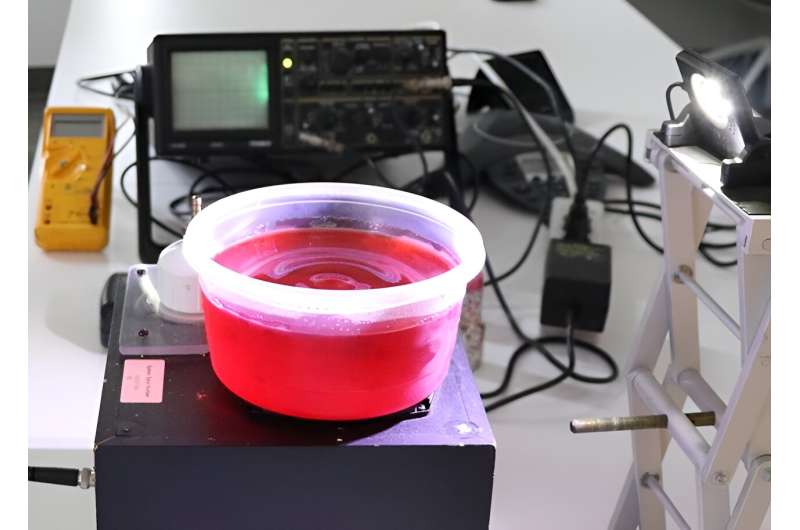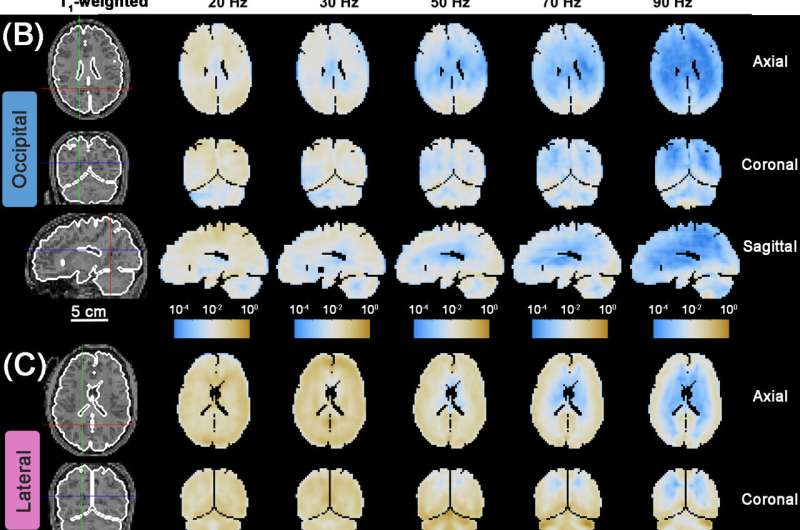This article has been reviewed according to Science X's editorial process and policies. Editors have highlighted the following attributes while ensuring the content's credibility:
fact-checked
peer-reviewed publication
trusted source
proofread
Researchers discover that a fast 'yes' is better for the brain than a slow 'no'

Researchers are learning more about what leads to traumatic brain injury, though they have to be creative to work around limited access to the brain.
"You can't study traumatic brain injury by running around hitting people on the head," said Ruth Okamoto, teaching professor in mechanical engineering & materials science in the McKelvey School of Engineering at Washington University in St. Louis. Instead, Okamoto and her colleagues use magnetic resonance elastography (MRE), a non-invasive imaging technique that can map the elastic properties and stiffness of soft tissues, to illuminate key mechanical characteristics of the brain's response to skull motion.
In new research published online July 11 in the Journal of Biomechanical Engineering, Okamoto and Philip V. Bayly, the Lee Hunter Distinguished Professor and chair of the Department of Mechanical Engineering & Materials Science, and their collaborators present new data about what happens when the head is jiggled at various frequencies in two directions.
"In this experiment, we're doing a safe test—gently vibrating your head back and forth like a bowl of gelatin—to gather information about how stiff the brain is and how it moves so we can make better computer models," Okamoto said. "When we jiggle your head in the MRI machine, we can actually see motion of the brain, and it looks like waves, like when you throw a pebble in the water and the waves move outward. It's the same kind of thing, except in our case the waves come inward from the skull."
During the experiment, volunteers had their skulls vibrated either from the back of the head, as in a "yes" nodding motion, or from the right side of the head, as in a "no" neck rotation. The research team imaged the waves produced at different vibration frequencies and determined the kinetic energy (KE), how much energy was transferred to the head, and the strain energy (SE), the energy of brain deformation.

Okamoto and her co-authors found that the ratio SE/KE was a revealing index for how vulnerable the brain is to skull motion. The ratio indicated a dramatic difference in brain deformation in response to lateral skull motion ("no" rotation) compared to occipital excitation ("yes" nodding). When the head was shaken "no," the SE/KE ratio was approximately four times larger compared to when the head was nodded "yes," suggesting lateral or side impacts are more likely to cause brain injury than occipital or frontal impacts of the same severity.
"The effect was much bigger than we anticipated, and the difference between 'yes' and 'no' was clearly apparent regardless of other factors like age and sex," Okamoto said. "It makes sense in the context of what other people have predicted—this is not counter to what other researchers have observed in computer simulations—but it does show that we still need more studies on different groups and different conditions."
Based on their observations, the team concluded that the brain's vulnerability strongly depends on the direction of head motion, not just the magnitude or strength of the impact. They also saw that the brain is sensitive to low-frequency motion, so "softening" a blow by making the force lower but longer lasting may not be an effective protection against brain deformation and injury.
"Next, we would like to find out what other factors are important in determining how vulnerable the brain is," Bayly said. "Does vulnerability change with age, for example in children or older adults? Does mechanical vulnerability depend on sex? Does the size or shape of the brain matter?"
"These results could influence how we try to prevent traumatic brain injury," Bayly added. "Should we focus more on protection against certain types or directions of impacts? Should we reconsider how we design or test helmets, for example to reduce energy transmitted to the brain, instead of focusing on reducing maximum acceleration? These are all open questions that need further study."
More information: Ruth J Okamoto et al, Effect Of Direction And Frequency Of Skull Motion On Mechanical Vulnerability Of The Human Brain, Journal of Biomechanical Engineering (2023). DOI: 10.1115/1.4062937


















